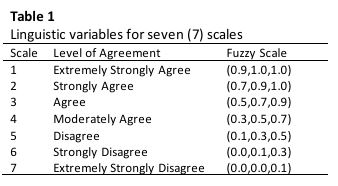Green Port Performance Indicators for Dry Bulk Terminal: A Case Study of Port Klang
DOI:
https://doi.org/10.37934/jsms.8.1.1928Keywords:
Green port, sustainable port, green port indicator, bulk terminalsAbstract
This study aims to develop green port performance indicators specifically for dry bulk terminals, using Port Klang as a case study. Handling approximately 4.5 billion tons of dry bulk cargo annually, this sector represents the largest volume of maritime trade and poses significant environmental challenges. Despite Malaysia's status as an important global shipping hub, there is a lack of comprehensive green policies in ports. The research employs the Fuzzy Delphi Method to achieve expert consensus on critical green port indicators. A purposive sampling technique selected 26 experts from various relevant sectors, including the Port Klang Authority, marine departments, and terminal operators. These experts provided their insights through structured surveys, and the data were analyzed using triangular fuzzy numbers to identify and prioritize key performance indicators. The findings highlight essential determinants for achieving sustainability in port operations, offering actionable insights for policy formulation and implementation. By adopting these indicators, Port Klang can enhance its environmental performance, contributing to the broader objective of sustainable maritime logistics.














